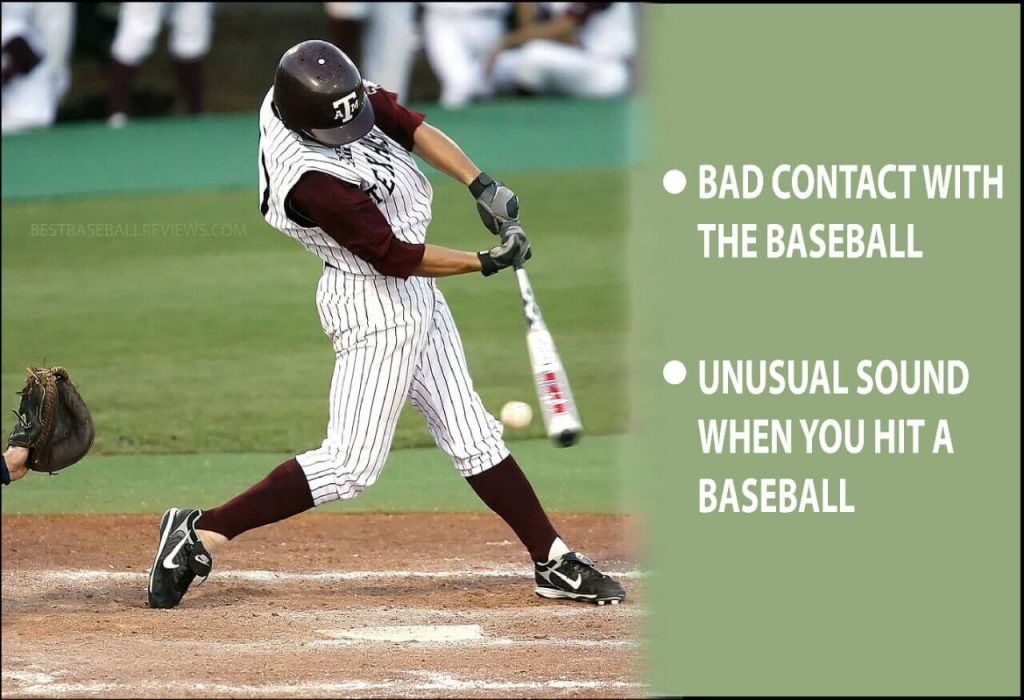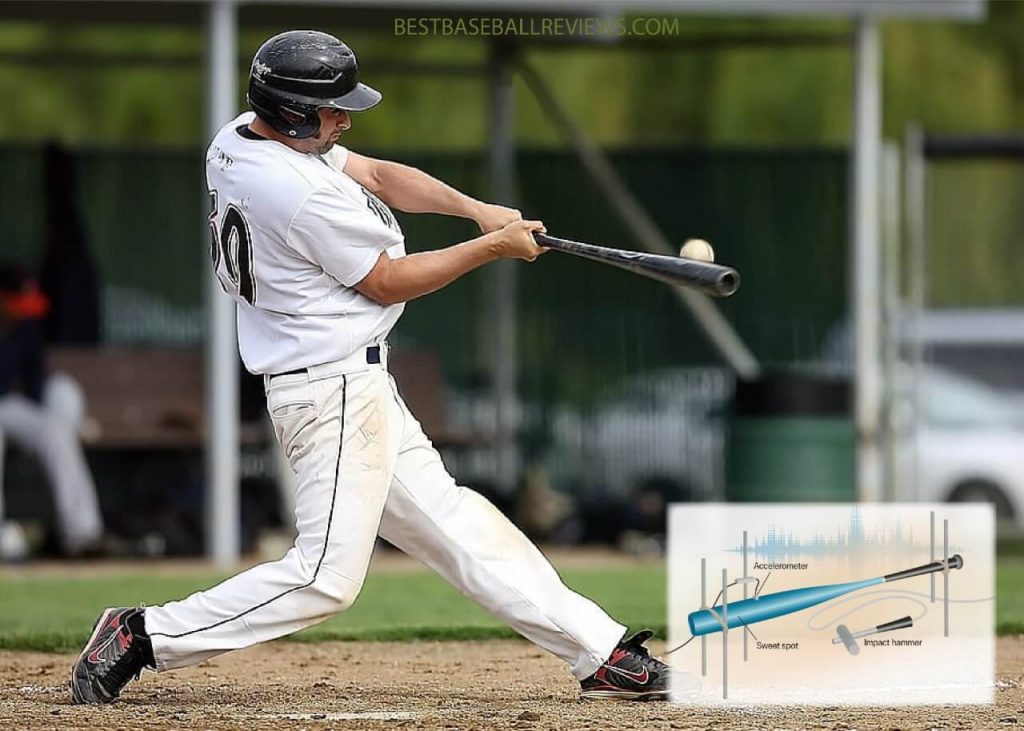Is your Baseball bat failing you? Is all your power behind hitting a ball going in vain? Did your baseball bat become dead? We will address these questions in this article. How long do composite bats last? Or any other bats like a softball or baseball bat, for that matter. If you are a serious baseball player, this is a question in your mind. In fact, knowing when your bat, an essential piece of baseball equipment, might fail you is something you should keep in your mind.
Baseball bats are like all the other sports equipment; they aren’t meant to last forever. Surprisingly you will hear that some bats lasted longer than most, but in the end, all bats and sports equipment, in general, have an expiration date. It doesn’t matter how expensive those bats might be or how well they are made.
As bats come closer to their expiration date, some signs show. It is up to you to see these signs and do something about them. However, not all signs point to a dead bat.
Table of Contents
How long do composite bats last?
In general, a composite can last up to 1 to 3 years sometime more. However, several factors will need to be considered before giving an accurate answer on a composite bats life expectancy. Some of the factors are frequency of use, batting style, types of pitches hit and if you broke the bat in or not.
All of these conditions and more will play a part in breaking in your bat. Therefore it is a good practice to check the shape of your bat both before and after a match or training.
Factors affecting how long composite bats last
Now that you know how long do composite bats last, you need to know what the main factors are that affect their longevity. Here are the five biggest factors that affect how long composite bats last:
- Frequency of Use: The more frequently a composite bat is used, the faster it may wear out. Each swing and contact with the ball can put stress on the bat, causing it to gradually lose its performance characteristics over time. High-frequency use, such as in daily practices or multiple games per week, can shorten the bat’s lifespan.
- Level of Competition: The level of competition can impact the durability of a composite bat. Higher levels of play often involve faster pitch speeds and harder-hit balls, which can put more stress on the bat’s barrel. Bats used in competitive leagues may experience more wear and have a shorter lifespan compared to those used in recreational or lower-level play.
- Bat Care and Maintenance: Proper care and maintenance can significantly extend the life of a composite bat. Factors such as storing the bat in appropriate conditions, avoiding extreme temperatures, and regularly cleaning the bat can help prevent damage and maintain its performance over time. Neglecting proper care can lead to premature wear and decreased longevity.
- Batting Technique: The way a player swings and makes contact with the ball can impact the bat’s lifespan. Poor technique, such as consistently hitting off the end or handle of the bat, can cause stress concentration points and potentially lead to cracking or damage. Proper technique, including hitting the ball squarely on the barrel, can help minimize stress on the bat and prolong its lifespan.
- Bat Material and Quality: The quality and construction of the composite bat itself play a significant role in its durability. Higher-quality bats made with advanced materials and manufacturing techniques tend to have longer lifespans compared to lower-quality or less-durable options. Bats from reputable manufacturers known for their quality craftsmanship often provide better durability and longevity.
What are dead baseball bats?
For the most part, a dead baseball bat is a bat that has lost initial power and potential. A bat is dead when it cannot swing that same degree of exit as it used to initially. Surprisingly many batters continue to use a dead bat due to not figuring out that their bat is dead or dying.
One of the few ways to determine a baseball bat being dead, at least for composite bats, is that it will have a massive crack going down its length. Baseball bats with this kind of damage usually don’t have a lot of power or pop behind their swings.
Aside from physical indication, other signs show a bat being dead. Now we will be talking about these signs.
How does a composite bat go dead?
As mentioned previously, all baseball bats have an expiration date. Therefore yes, even a composite bat can be dead. In general, the closer a composite bat comes to the end of its lifespan, the more different the bat will sound.
But players aren’t hitting the sweet spot more often, so a different sound comes, and they blame the bat for being dead. Also, a composite bat can have a significant crack going down the barrel to indicate it was dead.
How to identify a dead baseball bat?
When it comes to dead bats, various factors come into play. Some of these factors are relatively easy to spot, while others are more subtle. However, all of them can lead to a bat being classified as a dead baseball bat.
Surprisingly I say “can” instead of “do” is because not all of them will strickly mean the baseball is dead all the time, just some of the time. When the sign indicates the bat is dead and when it’s not, you will only understand if you look for it while playing.
Using the bat that you suspect is dead while looking for the signs, you can be sure of your suspicion. Now let us talk about these signs that indicate if your bat is dead or dying.
Decreased power
In the case of composite bats, a break-in process is recommended. In fact, without a break-in, many bats don’t show their full capabilities. We recommend around 150 to 200 swings with a quarter to third rotation to break in your bat or, specifically, its barrel.
After the break in the bat will work optimally in most cases. So if you notice a drop in bat speed or general swing power, then you might have cause for concern.
On the other hand, we have aluminum/alloy bats that behave entirely differently from composite bats. In the case of aluminum bats, we can’t tell if it’s dead just because there is a drop in swing power.

Time taken for the bat to reach its dead state will be dependent on various factors. However, all bats have a limited lifetime.
Irregular sounds
One of the best methods of determining if your bat is dead is to hear the sound it makes when it hits a pitched ball. If you are an experienced batter, you will know that every bat makes a different sound when it hits a ball.
At the same time, the type of sound a bat makes is similar. A bat performing correctly will make a pinging sound, whereas a dead bat will make a ponging or dull thud sound. I know that what I said isn’t very accurate, but it is true.

Since even experienced players may have a hard time identifying the hitting sounds, try to listen closely to the sound your bat makes when practicing. One more thing we here at bestbaseballreviews know about is dropping your bat on the ground with the knob, and we strongly discourage it since this does more bad than good.
Cracks or dents
Looking for physical damages such as cracks and dents is a good way of determining if your bat is dead or not. But the problem is not all cracks or dents mean a dying baseball bat. Also, different types of bats mean other signs of damage.
Dead composite bats
In most cases, composite bats will have a massive crack going down the middle. Alongside the massive cracks, the bats are also known to have hairline fractures, spiral fractures, or stress cracks. Surprisingly more minor cracks don’t necessarily mean that the bat is dying. In fact, it varies from case to case.
One of the best indications of a dead composite baseball bat is when it shows spider web cracks. These cracks mean that the bounce factor of the bat is increased. The higher the trampoline effect, the more fibers are broken down and the higher the bounce factor.
Dead alloy or aluminum bats
Due to the make of an alloy or aluminum bat, it doesn’t show any cracks to indicate if it’s dying. Instead what these types of bats show dents. Simply put, the more dents there are, and the more significant these dents are, the more likely the bat is to die.
The best way to spot the dents and how significant they are is to run your hand down the bat’s barrel. If you practice using batting cage balls, then there’s a higher chance of dents forming.
If you find any anomalies and it is not smooth, that will harm your batting performance, and maybe the beginning of your bat is going dead.
Stinging hands
Did you know that there are two possibilities when you feel a stinging sensation after you hit a ball? The first more common one is that you didn’t hit the ball properly and are experiencing a bad post-impact vibration. The other possibility is that your aluminum or composite bat is now dead or dying.
If it is the first possibility, the solution is more time in the practice field to learn to hit the ball at the sweet spot more often than not. Frequently most players assume the reason for the stinging sensation is due to a dead bat. In contrast, the feeling is due to the players hitting the ball near the bat’s end cap.

However, if you or the player is confident in their hitting abilities and still experiencing stinging sensation, it can indicate that the bat is dead. To clarify, the stinging happens near the thenar web space or put the skin area between the thumb and index finger.
Handle pushing up to barrel
Sometimes a composite bat is made using two-piece construction, the barrel and the handle attached using a connection piece. Due to the connection failing, the handle may start to push up and into the barrel.
If you see this happening and still have your warranty card, then I urge you to consider replacing the bat ASAP. Otherwise, you will be playing using a bat that is close to being dead. Also, this sometimes happens not due to the connection piece failing but because of a manufacturing defect. That, too, is covered by the warranty.
How does an alloy or aluminum bat go dead?
Similar to other types of bats, an aluminum bat can also go dead. But the way it indicates being dead is different from other bats. In general, composite bats lose their life expectancy faster than aluminum bats.
More often than not, an alloy bat goes bad because of how it’s used and not due to time. The best way to tell if these bats are dead is by checking for dents in the barrel.
When should you replace your bat?
We recommend that a baseball bat be replaced either within or just before the end of the warranty period. In most cases, a baseball bat will have a warranty period of two years, and that is the correct amount of time if the bat is used regularly.
Nevertheless, if you want your bat, baseball or softball bat to last that long, it must go through proper care. And that is what we will be talking about next.
Maintenance tips for composite baseball bats
Clean bat=Long life
Dirt on baseball bats or any other sports equipment is terrible; it’s as simple as that. The soil can compromise the grip of the bat, thus lowering your performance. Also, dirt can weaken the quality of bats.
Therefore make sure to clean your bat every few months using alcohol and other bat cleaning product. We recommend once every two or three months.
Don’t share
Each player has their hitting style, so sharing your bat will mean that it goes under different pressure from different players. This will lead to the quality of the bat decreasing faster.
Proper storage
As I stated before, dirt and other elements are harmful to the bat. Therefore you should keep it away from these elements as much as possible. It would be best if you kept the wooden and composite bats somewhere clean, dry and cool.
Let’s watch this video!
Frequently Asked Questions(FAQs)
How to break in a composite bat?
It’s not well known, but composite and alloy bats require “breaking in” to make them more responsive. In total, you need to practice hitting with the bat 300 or so times to complete the break-in.
The 100 hits should be from a tee stand at 50 and 75 percent power. The next 100 hits should be from soft tosses at 75 and 100 percent power.
The last 100 hits should be with a pitching machine with 100% of your power and 50 to 100 of the machine. After each hit, rotate the bat by 1/4 inch.
Which baseball bat lasts longer composite or aluminum?
In the great debate between composite and alloy bats, the question of which lasts longer is quite common. However, the answers aren’t as common or simple.
This is because there are a number of factors that determine durability. Common sense says that aluminum bats last longer since they are made of tough alloys.
Conclusion
Not much to say since I have already said the main parts. Using the information provided above, figure out if your bat is dead or not. Few last minute advice uses only regulation balls while practising.
Also, remember to use soft toss as well for your training. Using some soft toss between full toss will help you warm up nicely. Make sure to make a quarter turn after every swing and hits.
There are also ways to lengthen the lifespan of your bat to get the most out of it. You have to take care of your bat correctly.



